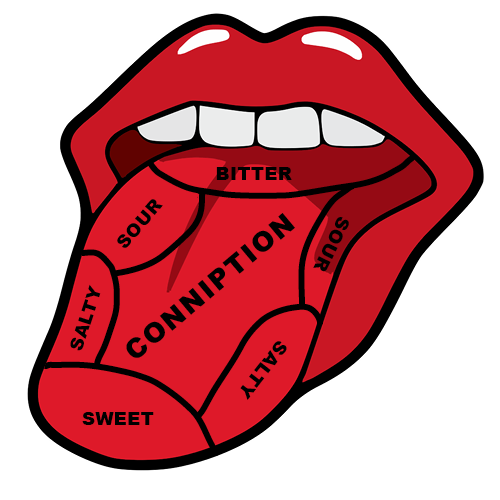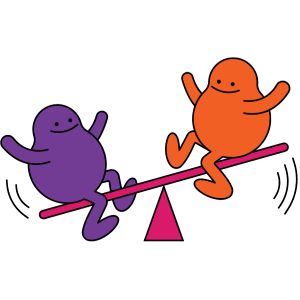The Gin and Vodka Debate : The differences you need to know
If you’ve ever ordered a martini, you’ve heard the request, “Gin or vodka?” And you may have wondered aloud, “Which is best?”

Here's the short answer, 'it's a matter of taste.' It's more about your personal preference than our judgment. Although we specialize in gin, we can't talk about martinis, gin, or vodka without recognizing that vodka is the preferred choice for most people in the U.S. But it's worth exploring why this hasn't always been the norm ... and truly, why so many vodka drinkers are converted to gin lovers with Conniption.
We all taste things differently, which is why there are 11,381 types of hot sauce, and over 6,000 gins produced worldwide. Ever wondered why some people have a love-hate relationship with cilantro? Well, blame it on our individual DNA sequences! Our DNA is like a personal chef, cooking up messages for our brains about how we perceive taste and smell. So, whether cilantro is a divine herb or a sudsy bar of soap is all determined by our genetic instructions!
Whether or not we like the taste of something is also impacted by our experiences. The first question we ask on a tour here at the distillery is: “Have you had a bad gin experience?”
Ever wondered about that peculiar question that never fails to make people raise their eyebrows? Believe it or not, over 50% of folks admit to raising their hands. Every single time. So yeah, back in the college days, when we decided to go for the inexpensive gin and mixed it with Sprite (of all things), it didn't quite bring back the fondest of memories. Nah, what we recall is that not-so-great feeling of indulging in low-quality booze. But hey, let's own it without any regrets!

How do we move ahead to rediscover a love of gin?
Well, your taste buds are the answer. Just as you can now afford those higher shelf gins, the 10-thousand taste buds lolling about on our tongues, (bonus points if you knew that they are also located on the roof of the mouth and back of the throat) change the way we taste as we age.
When we were young, taste buds replaced themselves every two weeks. But as we do not judge by taste buds alone, as we sip a [Negroni], chemicals travel up to our nose, moving in on the olfactory sensors, and this heady combination creates our perception of taste. As we get older, not all of those taste buds revive themselves, and by the time we hit retirement age, we might be batting around maybe 5,000. This helps explain why we hated coffee when we took a sip from our parent’s mug at age six and now can’t go by that fancy coffeehouse without craving it.
Are you wondering if the tongue map is legit? Apparently, there's this idea that different parts of our tongues specialize in different flavors: salty, sweet, sour, and bitter. But hold on! It turns out that theory was debunked - and get this, by a psychologist named Professor Boring! (No, seriously, that's his name!) So, the artists who illustrated the original 1901 theory and later versions in Boring's book took some creative liberties. They made it seem like certain areas were super sensitive to specific tastes, when in reality, every part of your tongue can pick up on all flavors to some extent.

So let’s get back to the fundamental questions at hand: gin or vodka? Are they the same? How are they different?
Gin, with its predominant flavor derived from juniper berries, will have a slightly woodsy, peppery taste. It has a known presence on the palette and juniper’s strength is solely from that particular category and brand of gin you are drinking -- and even more explicitly what that gin distiller wanted to focus on, especially with selecting the other ingredients or botanicals to complement.
Today, Gin is not just the London Dry Style that you recall from your grandparents’ liquor cabinet. In fact, there are more styles of gin than many realize including compound, contemporary, matured (aged), old tom, sloe, and navy strength. Today’s gin distillers explore an infinite range of botanical blends and distillation techniques for flavor nuance and cocktail versatility. Conniption gins are categorized as contemporary gins.
Vodka, on the other hand, is judged by its neutrality. Think of it as the Switzerland of spirits. It’s there but more often than not, it isn’t meant to impart a specific taste in a cocktail (do not confuse with flavored vodkas as those are a different category all together and are meant to be flavorful). Vodka is not meant to have much character. That isn’t to say that there aren’t taste preferences of vodka, especially if it is made from corn or potato or even from grapes. But is vodka discernable in cocktails? We may raise some debate here but no, it really isn’t. Vodka is mainly a vehicle for alcohol in cocktails – and that’s the taste difference here between a martini with gin or a martini with vodka.
Did you know? Both gin and vodka are lower in congeners (a substance produced during fermentation) than whiskey or bourbon which translates to less intense hangovers. Just think, “clear liquor equals less hangover. The darker the liquor the darker the dawn.”

Back to our distillery tour – our second question, which we affectionately dub as 'The Great Gin-Vodka Debate,' revolves around what distinguishes a gin from its vodka counterpart. It's a question that leaves many scratching their heads!
Vodka and Gin are the ultimate sibling duo who share everything but a toothbrush. More like partners in crime than distant cousins you only hear about during those legendary family reunions ('You remember cousin so and so, right? The one who rocked the dance floor at that wild family shindig!')
So here's the deal: the only thing that sets gin apart is the juniper berry. And get this, here's the kicker and the absolute nutty part: gin is flavored vodka.
Yeah, you read that correctly. Gin is vodka's fun-loving sibling who decided to spice things up with a touch of botanical magic. And guess what? If you take away that juniper berry magic, it's not gin anymore. The federal government (TTB) would now require that spirit to be labeled a flavored vodka.
"A perfect martini should be made by filling a glass with gin then waving it in the general direction of Italy." -Noel Coward, English Playwright
Bottom line: Can you rewrite your bad gin memory? Yes, yes you can – and we’re here to hold your hand. So, if you think you don’t like gin, give it another try with Conniption American Dry (we’re proud of ourselves right there). The world of gin has changed and so have you.
-
Can you swap gin for vodka or vodka for gin?
Gin MuleTo gin or not to gin? That is the question. Well, it depends on the taste adventure you seek in your cocktail. Gin-based concoctions tend to demand its inclusion for that extra je ne sais quois - but when it comes to a mule, vodka is a perfect partner. Yet, we dare say that gin can also bring a touch of divinity to the mix.
-
Can you combine gin and vodka in cocktails?
Try the tried-and-true VesperHey there, you fearless risk-taker with a love for libations! Allow me to introduce you to the Vesper. Inspired by Ian Fleming's Casino Royale, this cocktail consists of three parts gin, one part vodka, and a touch of Lillet (a fancy French wine aperitif). But here's a twist for the mischievous: the Reverse Vesper! Flip the ratios with three parts vodka to one part gin and a splash of Lillet.
-
Didn't know gin is in a Long Island Iced Tea? Bless your heart.
Let's dive into the fascinating story behind the 5-shot Long Island Iced Tea! Brace yourself for some controversy, my friend. So, legend has it that bartender Robert Butt whipped up this marvel during a mixology contest way back in 1972. However, there are whispers that its origins stretch even further back to the 1920s Prohibition era. Some believe bootlegger Old Man Bishop cunningly crafted this cocktail to resemble a southern classic. He blended tequila, vodka, triple sec, gin, and rum together, resulting in a tantalizing 22% alcohol concentration!

